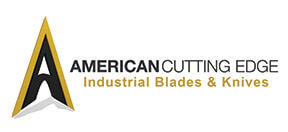Coatings & Specialty Blades
Once a knife has been designed to meet the application conditions including material selection and general shape, there are other factors that can enhance the life or performance of the knife. These include surface treatments, coatings, and edge preparation. See the selection under Technical Info for a discussion of edge preparation considerations. We will discuss the potential advantages that surface treatments and coatings can bring to your application. Coatings and surface treatments are not inexpensive processes and so these techniques are not suitable for every application but at times they can significantly extend the process life for a knife. Keep in mind that often times, the actual cost of the knife is insignificant relative to the total cost of the process in which it is used. By spending a little or even a lot more on the knife to increase life, total line throughput can be increased significantly and downtime for maintenance or blade changes can be minimized. Contact us for more information and a specific assessment of your application.
We differentiate between coatings (where materials are added to the outside of a knife) and surface treatments (Where enhancing materials are infused into the Surface of the knife).
Coatings can be applied either through an adhesion process or by chemical deposition. Examples of the adhesion process would include Teflon coatings, spray welding or electroplating. Chemical deposition processes would be used to bond coating materials to the knife at the molecular level and include such coatings as Titanium Aluminum Nitride (TiAlN), Titanium Nitride (TiN), etc. Coatings and plating are usually used to deal with specific conditions that will extend the life of a knife. These include:
- Lubricity – Provide a lubricated surface that reduces friction.
- Adhesion resistance – Prevent the material being cut from adhering to and building up on the knife.
- Wear resistance – Increase the surface wear resistance of a knife while leaving the sub material that may be tougher but less wear resistant in its original state. This may to some extent provide the best of both worlds in allowing a tough knife with enhanced wear characteristics.
- Chemical resistance – To improve a knife’s resistance to chemical deterioration, a surface layer of a more chemically resistant material may extend the life of the tool.
Surface Treatments generally are an infusion process where a specific element is infused into the surface of a knife to enhance its performance. These are typically designed to give greater wear resistance. Examples of this process are infusing Nitride or Boride into the surface to provide a thin (typically a few microns) of much harder material that resists wear.
Both coatings and surface treatments are done by either volume or weight and so, on small knives can be found to be economically viable. On larger and therefore heavier knives, these processes are usually cost prohibitive.
Contact ACE today and let our experts help identify the coatings and materials best-suited for your application.

